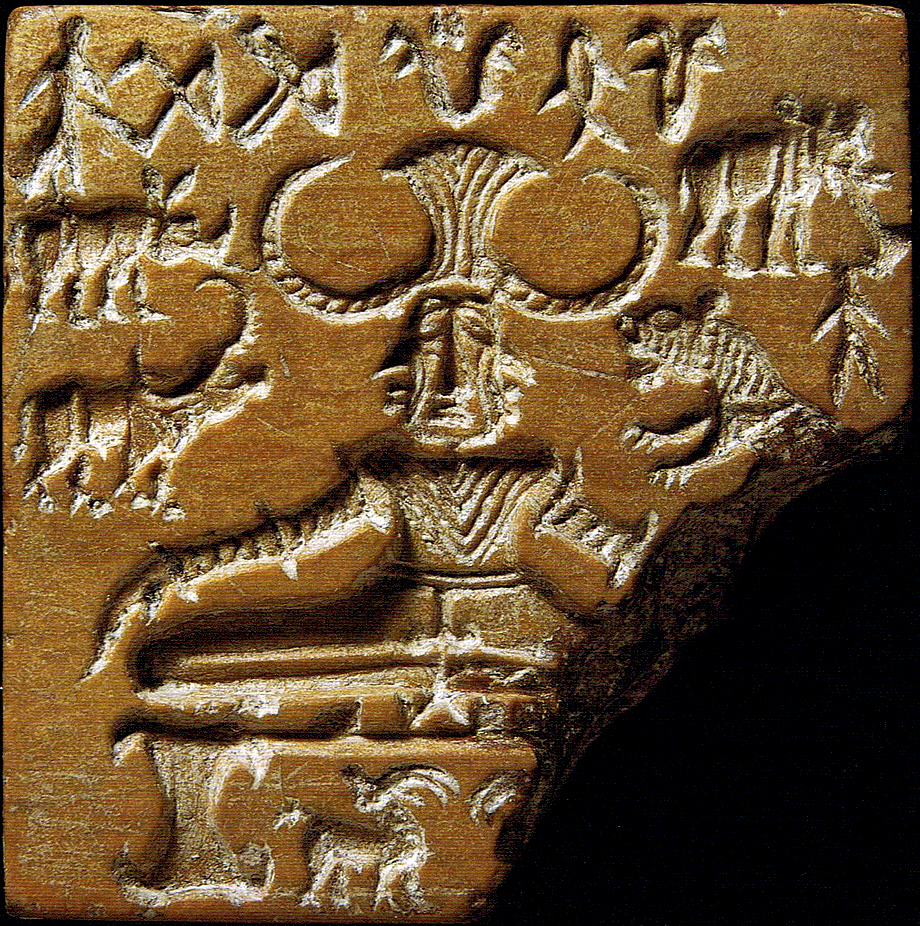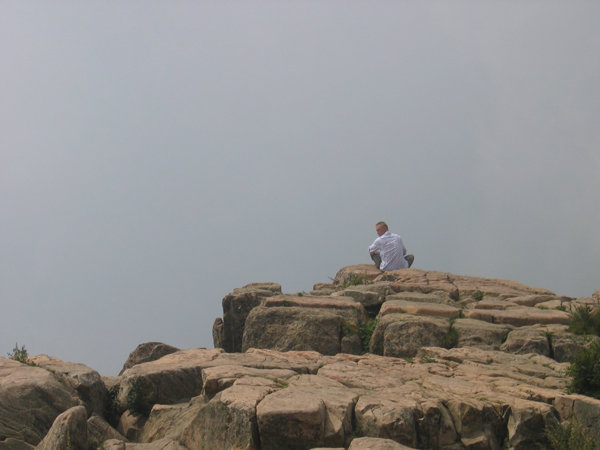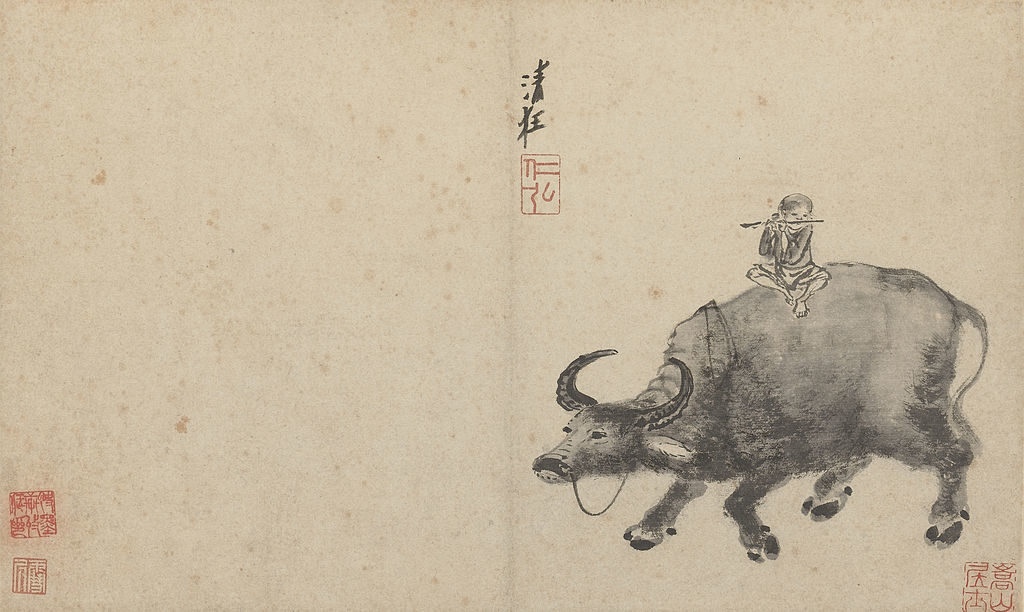
Preparing for Alchemical Visualization
The descriptions of Daoist alchemical meditation in this article are for the purpose of visualization, and no scientific claims are made regarding “spiritual anatomy” or the benefits of the meditations. The Science Abbey articles, “Ancient Chinese Philosophy and Daoist Meditation” and “Chinese Alchemy” present a relatively thorough discussion of Daoist meditation from a critical and scientific perspective. The attempt has been made here to create a blueprint of the basic system of Chinese Daoist symbolic alchemy for those interested in experimenting with the method.
The framework follows the general scheme of the Daoist “Immortal” Zhao Bichen (1860 – 1942) with precise details of his particular methods excluded. Lu K’uan Yu a.k.a. Charles Luk (1898 – 1978) has already described a procedure of eight alchemical operations from The Secrets of Cultivation of Essential Nature and Eternal Life, written by Zhao Bichen, in Taoist Yoga: Alchemy and Immortality. I also reference Jou, Tsung Hwa’s The Tao of Tai-Chi Chuan: Way to Rejuvenation.
Wudang Daoist monks say that “Qigong” is the first stage of practice in Neidan, or Daoist internal alchemy. Qigong, which means “work with Qi,” is the art of mastering Qi or life-force and discovering the “inner medicine” to sustain heath and balance. The Daoist alchemist has traditionally used these methods as part of a holistic monastic lifestyle.
As preparation, ideally the alchemist will have a quiet hut or temple not too far from a town or city, a meditation seat, money for food, etc., and companions with whom to practice alchemy. The goal of the alchemist is to return to the pure positive state of infancy, the ultimate psychological expression of wu-wei (non-action).
Ideally, the alchemist begins alchemical work at age sixteen when he or she matures and, through passion, learning and acting in the world, begins to deplete their life-force. Thus, in returning to a state of infancy, one fulfills the cycle of Taiji (the Grand Ultimate; yin and yang) in the span of one’s life.
To prepare for meditation one may take a walk in a park, on a seashore, or elsewhere in nature before going indoors to meditate, if one goes indoors. One may hang a Taijitu, the yin-yang symbol, on the wall at eye level or visualize one in the Lower Elixir Field, the center of gravity just below the navel. One may use a meditation stool or cushion. Candle and incense may be lit. Find a comfortable posture. Fix the eyes on the tip of the nose or close them. Close the mouth and touch the palate with the tongue.
One may use any object to stare at instead of the nose. Then one concentrates on the original cavity of spirit, the Mysterious Pass or Third Eye, without strain or relaxation, in order to realize the Oneness of all things. Breathing is even, that is, inhalation and exhalation of successive breaths are of equal length.
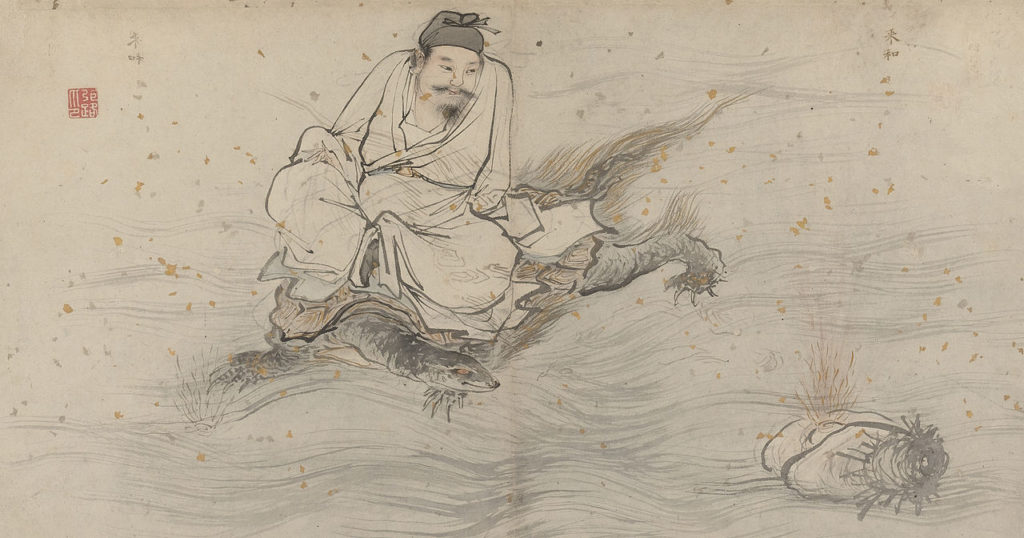
Sitting Postures
- San-Pan: loosely sitting with the legs crossed, hands on knees, palms down.
- Tan-Pan: “half lotus”, hands in Taiji (Tai Chi) Knot Mudra (hand posture) and placed on inner leg. The Taiji Knot Mudra: The right hand is placed under the left, palm upward, its thumb in the left palm. The thumb of the left hand presses on the left middle finger. The tips of the thumbs press each other. This forms a circuit of the eight psychic channels.
- Shuang-Pan: “full lotus,” also known as “Five Centers Face the Sky” (feet, palms, tongue), right hand above left hand, thumbs connected and placed on inner leg.
Standing Postures
Zhan Zhuang (Jan-chung) is standing meditation. One imagines one’s weight sinking into the ground, the head is held as if suspended by a string from above. Posture is comfortable and easy but balanced as if a teacup sits on top of the head. An imaginary line connects the heavens, man, and earth by running through the spine out the top of the head and thru the center of the earth.
It is customary to do it outdoors and gaze at something green. Those who are interested should learn the postures from a teacher or a book by a qualified taijiquan teacher.
- “Beginning Posture”
- “Single Whip”
- “Lift Hands”
- “Holding a Jug”
Types of Daoist Breathing
- Natural Breathing
- Cleansing Breath: Inhale thru nose, exhale thru mouth, like sighing
- Tonic Breath: Inhale thru mouth, exhale thru nose.
- Alternate Breathing: Inhale thru one nostril, exhale thru other, using index fingers. Calming.
- Natural Deep Breath – may also stretch. deep – breath drawn to navel, belly held in.
- Long Breath – “Postbirth Breathing” long – slow and sustained with no intervals between breaths.
- Prebirth or Prenatal Breathing – reverse breathing for rejuvenation. Abdomen contracts on inhale.
- Tortoise Breath – Forgetting Prebirth Breathing after many years leads to slow and long, powerful breathing; 3-4 breaths per minute. Fine, soft and silent; natural breath appears to cease.
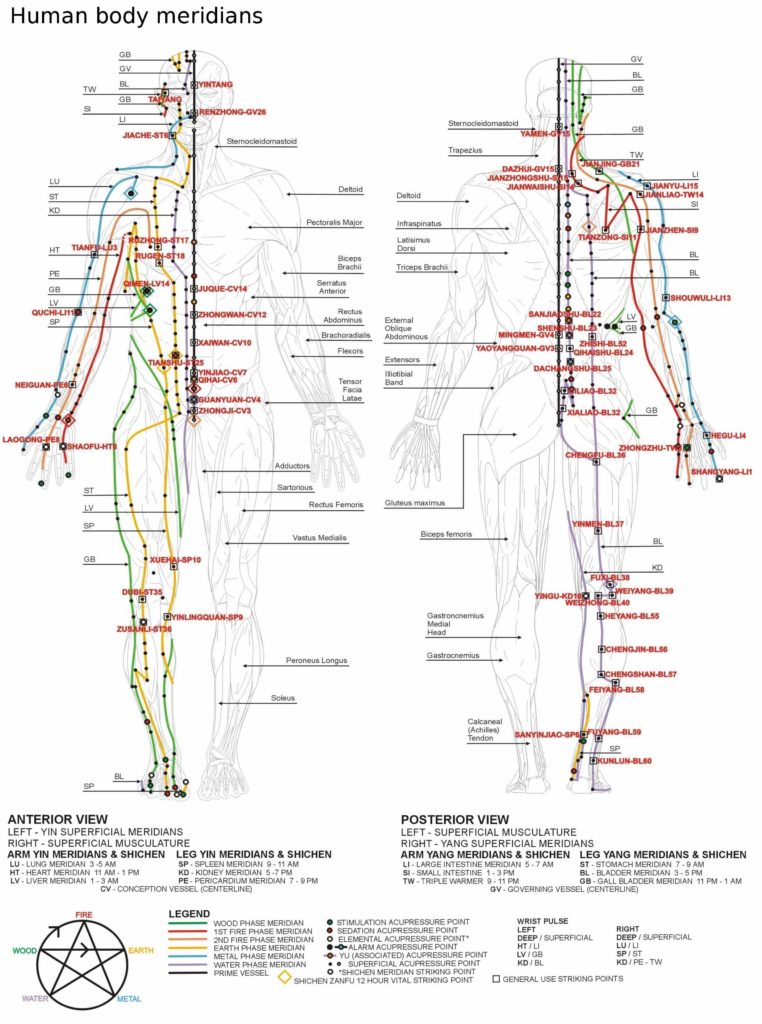
Breathing exercises and Daoyin are used in taijiquan; Qigong is the root of taijiquan. Taijiquan is moving meditation. According to tradition (not science), the hours of midnight to noon are the most favorable to Qigong. Qi “expires” from noon to midnight. Traditional Chinese Medicine theorizes a Twelve Meridian system with twelve associated organs, and eight extra meridians, which are visualized in Qigong.
The tan tien (Dantian), or “elixir field,” proper is the center of gravity about two (for men) or three (for women) inches below the navel. Traditionally there are three total dantians, or qi focus centers. Besides the lower dantian at the center of gravity, there is the middle dantian at the level of the heart and the upper dantian at the forehead, between and slightly above the eyes, like a third eye.
Twelve Organs and Meridians
- Hand’s Major Yin Lung Meridian … Lung
- Hand’s Minor Yin Heart Meridian … Heart
- Hand’s Absolute Yin Heart Protector Meridian … Pericardium
- Hand’s Minor Yang Triple Burner Meridian … Triple Burner
- Hand’s Major Yang Small Intestine Meridian … Small Intestine
- Hand’s Yang Supreme Large Intestine Meridian … Large Intestine
- Foot’s Major Yin Spleen Meridian Greater Yin … Spleen
- Foot’s Minor Yin Kidney Meridian … Kidney
- Foot’s Absolute Yin Liver Meridian … Liver
- Foot’s Minor Yang Gallbladder Meridian Lesser Yang … Gall Bladder
- Foot’s Major Yang Urinary Bladder Meridian … Urinary Bladder
- Foot’s Yang Supreme Stomach Meridian … Stomach
The Eight Meridians or Psychic Channels
- Conception Vessel, jen mo (Ren Mai) – channel of control – rear cavities, base of genitals to brain, through spine
- Governing Vessel, tu mo (Du Mai) – channel of function – front cavities, base of genitals to brain, through spine
- Penetrating Vessel, chung mo (Chong Mai) – thrusting channel – central, between tu mo and jen mo, base to heart
- Girdle Vessel, tai mo (Dai Mai) – belt channel – navel level around waist
- Yang Linking Vessel, yang yao (Yang Wei Mai) – positive arm channels – outside of arms, shoulders to palms (middle fingers)
- Yin Linking Vessel, yin yao (Yin Wei Mai) – negative arm channels – inside of arms, chest to palms
- Yang Heel Vessel, yang chiao (Yang Qiao Mai) – positive leg channels – soles – outside of legs to base of genitals
- Yin Heel Vessel, yin chiao (Yin Qiao Mai) – negative leg channels – soles – inside of legs to base of genitals
The Macrocosmic Orbit
Inhale – tu mo base to brain: Exhale – jen mo
Inhale – jenmo up to tan tien and tai mo, up back to shoulders: Exhale – yang yu
Inhale – yin yu: Exhale – tai mo to base
Inhale – chung mo (to solar plexus): Exhale – yang chiao
Inhale – yin chiao to base to tan tien: Exhale to base.
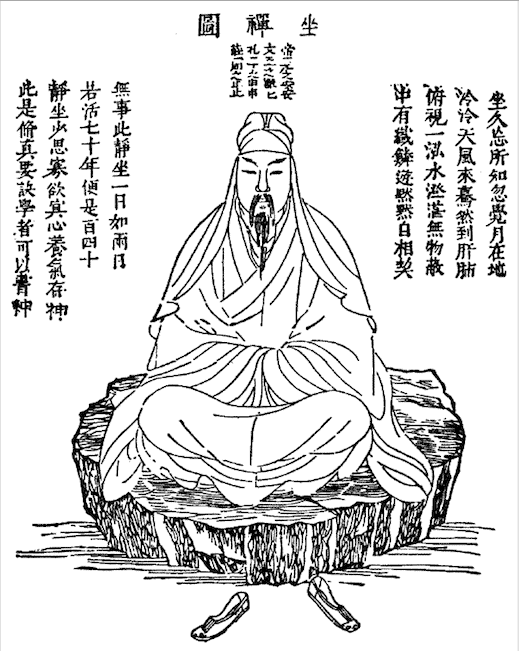
Clearing the Eight Psychic Channels
and Immortal Breathing
The Microcosmic Orbit, or Small Heavenly Circle, is a visualization of a circuit along ten or more points. The meditation of the Microcosmic Orbit, known as Clearing the Eight Psychic Channels or the “Self-turning Wheel of the Law” is done daily as purification.
The attention or “Inner Fire” is moved from the dantian to the base of the spine, then rises on an inhalation up the back of the spine along the Governing Vessel to the crown of the head. Then, on exhalation, it moves down the front and center of the body along the Conception Vessel, completing one full circuit or orbit.
Thus, according to tradition, the Eight Psychic Channels form a circuit thru which generative force (jing) and Qi flow. Not surprisingly, there is no scientific evidence to support the existence of these channels, jing or qi, as discussed in “Ancient Chinese Philosophy and Daoist Meditation” and “Alchemy, Qigong and Taijiquan.” The value of these meditations lies in their potential utility as therapeutic guided imagery.
Prenatal Breathing from heels to crown also turns the “Wheel of the Law.” Postnatal breath is also drawn up through the heels, up the channel of control, to the brain, with an exhalation down the channel of function to the mortal gate, the base of the spine. This causes prenatal breath to follow postnatal breath, eventually producing the spiritual fetus. This state should be the same attitude as when in bed ready to sleep.
A time will come when enough jing and Qi are gathered and regulated breathing – the wheel of the law – is no longer necessary. The ultimate goal is to seem to stop breathing and stop the pulse, as well as stop eating and sleeping – perfect stillness – which is called Immortal Breathing. The skeptic will doubt this ideal state is possible and science will likely prove this to be true. The goal, however, remains important as an ideal, even though it is never to be reached.
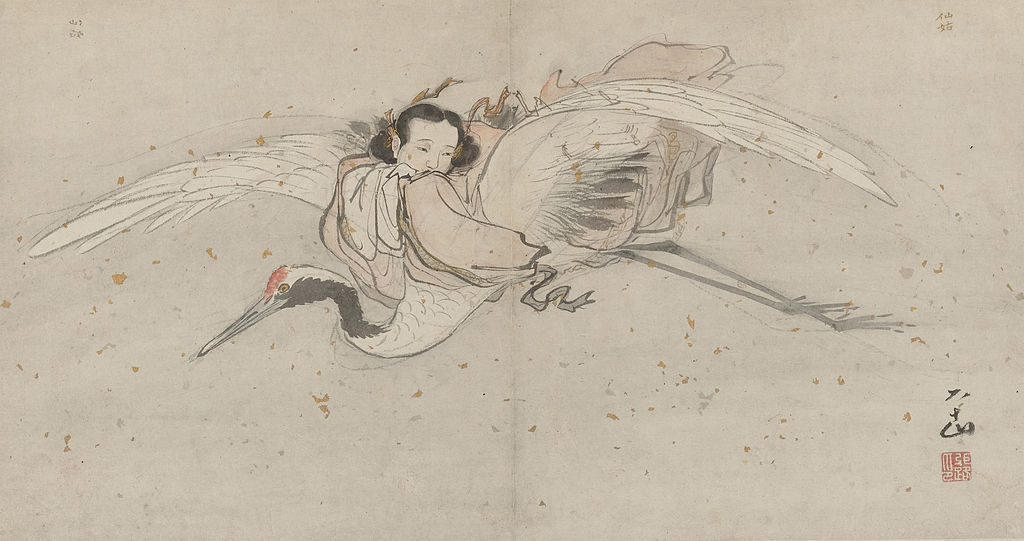
Alchemical Operation One:
Conservation of the Three Treasures
The first operation is the Conservation of the “Three Treasures,” Jing, Qi, and Shen, each which represent a kind of spirit. The practice of Daoist alchemy begins with self-restraint, moderation and stillness. The alchemist learns to control the heart, the seat of fire, that it may not be stirred by the seven emotions: pleasure, anger, sorrow, joy, love, hate, desire; or the five thieves: eye, ear, nose, tongue, body. This is the foundation of the preservation and growth of jing, or generative force, which is dispersed by the senses and emotions.
According to the second chapter of the Daode jing, the One gives birth to the two (yin and yang), the two to the three (jing, qi, shen), and the three to the 10,000 things (an archaic Chinese term for the totality of all things in the universe.) This is the progressive degeneration of Creation, which is completed only by the Return, whereby the alchemist transmutes the jing, qi and shen in his physical body and the inner universe returns to Dao.
The alchemist returns to the state of an infant, no-mind, at one with Dao and manifesting wu-wei (non-action). Cultivating the Three Treasures thus leads to Daoist Immortality. Cultivating jing, or essence, leads to a store of generative energy. Cultivating Qi, life-force or vitality, leads to the realization of eternal life. Cultivating shen, or spirit, leads to the realization of essential nature.
Modern science has much to say about the cultivation of health, personal energy and greater awareness, and even some Daoist practices. There is still much to explain about the psychological processes behind states of consciousness.
A Scientific Review of Health Benefits of Qigong and Taijiquan (Tai Chi)
Science-Based Medicine and Acupuncture
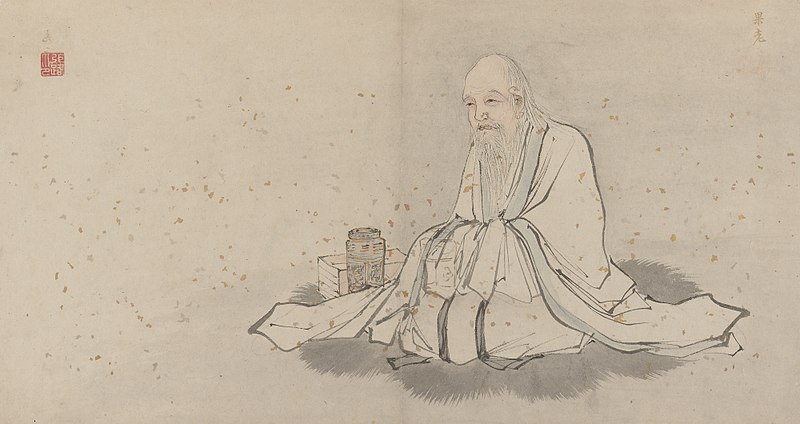
Operation Two:
Restoration of Jing
The second stage is the Restoration of Jing. Course jing is contained in the semen and wasting it depletes the Three Treasures. Retention of the semen and cultivation of tranquility allows jing and Qi to flow from the ‘three receptacles’ (brain or head, heart and Base or “Kidneys”) into the “psychic channels.” The Base (and by implication, the genitals) is called the “Gateway of Life.”
Lust drains jing and Qi from the proper paths to the Gateway of Life, wasting them. Still, extremes are to be avoided; pure abstinence is not to be expected, even in older people. In conservation of the jing, desires, especially lust, must be refined to moderation. As for the reparation and retention of jing, a healthy lifestyle free from strong passions will repair depletions of jing and Qi, from an earlier life without the benefits of alchemy.
Alcohol and strong seasonings on food ought to be avoided; the diet must be plain and nutritious, mainly vegetables; and one should engage in moderate exercise such as taijiquan. This is called “collecting jing” or “gathering jing.” The alchemical exercise for gathering jing is the practice of transmuting shin to jing.
Operation Three:
Transmutation of Jing
Stage three is the Transmutation of Jing. Course jing is related to blood and semen. Subtle jing is produced from course ching when ejaculation is restrained, desires and sensations are stilled, thoughts are stilled, and consciousness rests in stillness. One returns to this state of tranquility with meditation on the light of the Precious Square Inch, or Third Eye, the space between and slightly above the eyes.
Cosmic jing is the formative force in the body. Emptying the mind settles the chi and jing is produced; yang-qi (pure cosmic vitality, the De of Dao or virtue of the Way) gathers in the mind and nourishes jing. Yang-shen (cosmic shen, a property of Dao, itself) flows in through the Third Eye, reaches its peak and becomes “contained” because the entrances of all the body’s senses and psychic cavities are sealed off and guarded. Course jing is gross and impure, while subtle jing is fine and uncontaminated, so nourishing and purifying course jing transmutes it into subtle jing.
Operation Four:
Nourishment of Qi
The fourth step is Nourishment of Qi. Nourishing Qi means accumulating a full store of subtle Qi. Course Qi is in the breath. Subtle Qi is potential energy. For this, the passions must be stilled, and the breath is used to nourish the course and subtle Qis. Passions refer to anger, desire, intoxication or any immoderate emotion.
Subtle Qi is collected thru the proper interaction of the Three Treasures. Subtle Qi is then transmuted into yang-shen (pure cosmic spirit), bringing the alchemist to merge with Dao, the limitless Source of Being. Shen, our nature, and Qi, our life, are tied to breath control. This is the operation of Qigong, the Macrocosmic and the Microcosmic Orbit, as described above.
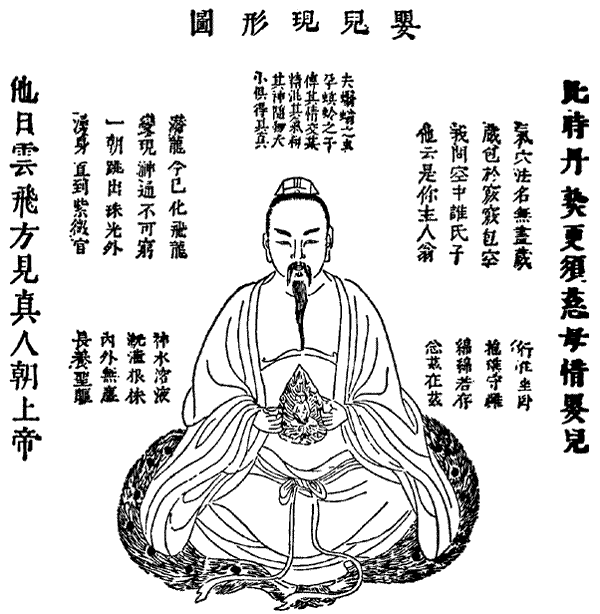
Operation Five:
Transmutation of Qi
The fifth stage is Transmutation of Qi. The heart of Daoist alchemy resides in techniques to transmute Qi to shen, such as “Transmute Jing to Void.” The Cavity of the Dragon or Lower Elixir Field (Dantian) is the seat of the vital force (jing) and element of water. This is the center of gravity, about two or three inches below the naval. The Heart is the seat of the spirit (shen) and the element of fire. The alchemical operation is the concentration on the Cavity of the Dragon, drawing the fire down into the water, and drawing the steam upward.
The Lower Elixir Field is visualized as a stove under a cauldron of generative force (jing Qi). The cauldron itself is visualized to rise while the stove remains. The cauldron begins in the Lower Elixir Field to gather generative force (jing), then moves to the “Middle Elixir Field” in the solar plexus to transmute jing to Qi, then moves to the “Upper Elixir Field” in the brain to transmute jing to shen.
Operation Six:
Nourishment of Shen
In the sixth stage, the Nourishment of Shen, the alchemist concentrates the course shen in the body. This causes Qi to gather and nourishes the jing. This is done by concentrating the mind, free of thoughts and desire, so it becomes pure spirit. Late at night, without fixed postures, hands are folded together, all is relaxed, and the alchemist focuses the mind on nothing but the body. The alchemist lets the mind be still but controls it so one’s own body is the sole object of its attention. The senses are banished.
Operation Seven:
Transmutation of Shen
During the seventh operation, the Transmutation of Shen, course shen is completely transformed to subtle shen. Even the body is forgotten. Nothing remains but pure awareness.
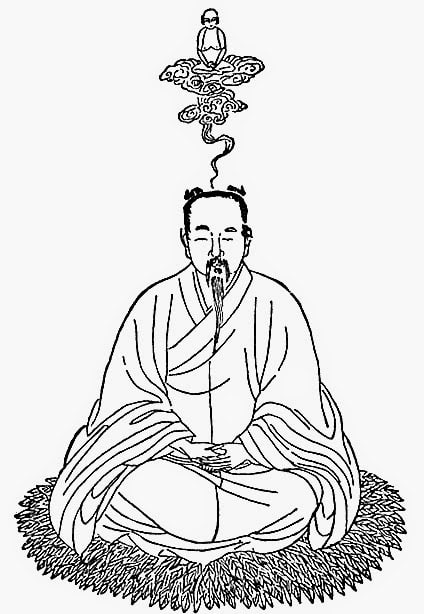
Operation Eight:
Transmutation of Cosmic Shen to Void (Dao)
The eighth and final process is Transmutation of Cosmic Shen to Void (Dao). The illusionary individual self makes the ‘Return to the Source.’ The generative force, vitality and spirit are united to form the spiritual embryo. Thus course jing has been made subtle: subtle jing has been used to transmute course Qi to subtle Qi; subtle jing and subtle Qi have been used together to transmute course shen into subtle shen; which has been made into void. A spirit embryo has been created which can return to the Dao.
When the alchemist is ready to “stop the fire”, or stop practicing the technique of the microcosmic orbit, he is ready to go to a mountain to train “stopping fire” to collect the macrocosmic alchemical agent, circulating heart, spirit, and thought instead of jing and Qi. He will have visions of heavens and hells, and objects of sensual desire, such as beautiful women. He must focus on the Third Eye and hold onto the One. The adept is ready to sacrifice his body for immortality. The adept reverses the way of the world.
The creation of the Immortal Fetus begins with the five vital breaths activating the five organs (Water – north, body/generative force; Fire – south, heart/breath; Wood – east, essential nature/incorporeal soul; Metal – west, passions/corporeal soul; Earth – center) and coalesce in the head as a cross or pentagram of light. This light (yin) unites with the golden light of Qi (life-force) in the union of the positive (light/yang) and the negative (yin) principles, and the immortal fetus is created. Like a real fetus, it is said to take nine to ten months to complete.
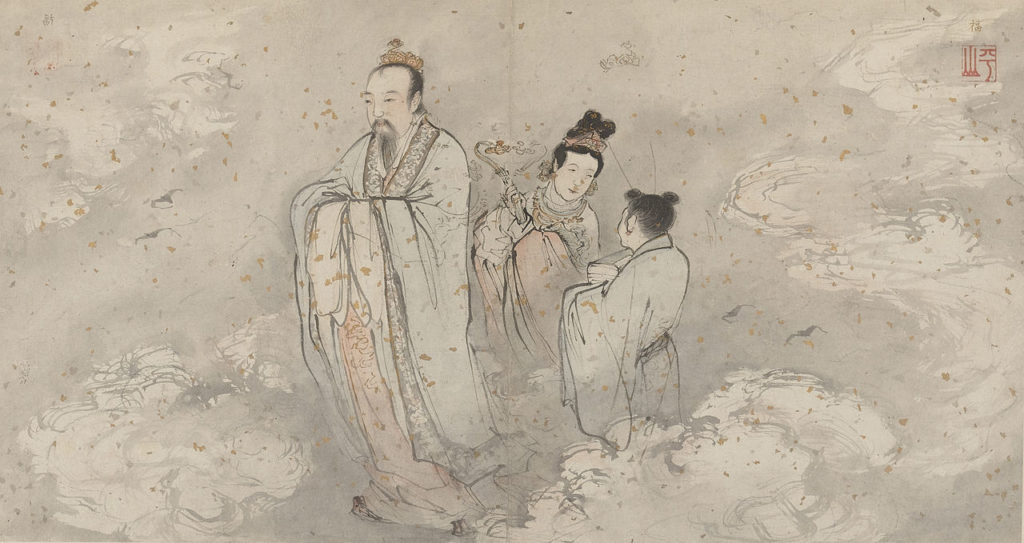
In the next visualization, the immortal fetus must be lifted to the brain, rise out of the crown of the head, and returned to the body via the Third Eye. The vital breaths of the Twelve Functions and Organs of Traditional Chinese Medicine are concentrated in the head. Then, when one is united as one with the fetus, the fetus is forgotten, and there is only positive prenatal spirit, one leaves the mortal body from the crown of the head, stirred by the thought of emptiness.
As the immortal fetus, or rather, the positive prenatal spirit, the Daoist rises out of his head into the void and the universe. The Invisible Body leaves the body by opening the gate at the top of the head. Finally, the positive spirit should be returned to its original cavity, the Third Eye, where the serene alchemist rests his concentration until the four elements disperse and all is annihilated.
Magical powers are traditionally said to be attained when the immortal fetus is fully developed, and Spirit is wholly positive:
- Stoppage of all drain of vital and generative forces
- Divine sight – to see things in heaven
- Divine hearing – to hear voices
- Knowledge of past lives
- Understanding other minds – knowing the thoughts of others and predicting the future
- The divine mirror – visions on a magic mirror or crystal ball
The skeptic will doubt the veracity of accounts and claims regarding these alleged powers. The burden of proof lies with the one who makes the claim. Science cannot prove a negative, but if claims are made, it can investigate and with enough evidence disprove any such supernatural assertions to the satisfaction of the serious inquirer.
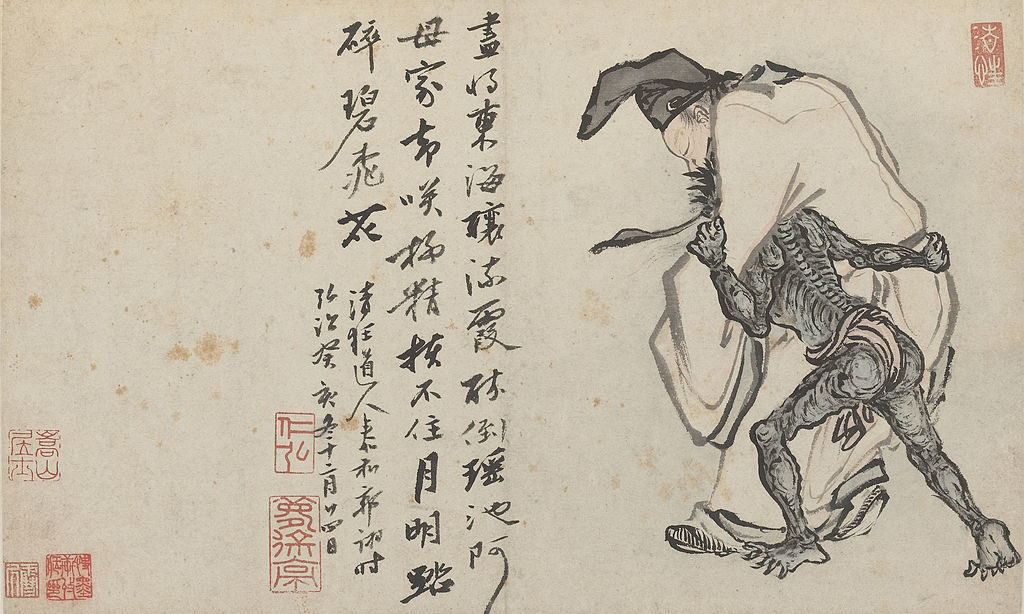
For further reading…
Taoist Mysteries and Magic by John Blofeld
Description of the Alchemical Process
For more on Daoist alchemy, see
Chinese Alchemy


